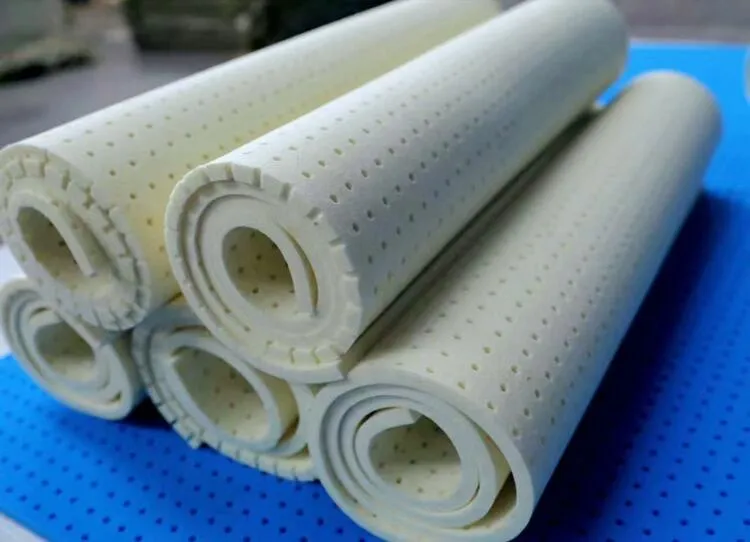
In the textile and garment industry, perfection isn’t optional—it’s expected. Customers don’t see the factory, the process, or the equipment. They only see the final product. That’s why the finishing stage—especially pressing—is crucial. And yet, one of the most overlooked factors in that process is something deceptively simple: iron table foam.
It’s not just about cushioning or heat resistance. The wrong foam can cause uneven pressure, steam retention issues, or worse—damage to fabric. In industries where consistency equals quality, investing in the right steam iron table foam is a small decision with a massive impact.
The Hidden Backbone of Fabric Perfection
Most people outside production never think twice about pressing tables. But behind every crisp shirt or precisely pleated skirt is a table carefully designed to support high-volume ironing. And at the heart of that table is a layer of foam doing more work than you think.
Vacuum iron table foam isn’t just padding. It’s engineered to optimize airflow, resist heat distortion, and deliver uniform pressure across various fabric types. When paired with suction systems, it helps evacuate moisture quickly—reducing drying time and preventing fabric scorching or shine.
What Makes High-Performance Press Table Foam Different?
Not all foams are created equal. Some deteriorate quickly under high heat. Others retain moisture, turning your iron table into a mold magnet. That’s why top manufacturers rely on advanced formulations—especially polyurethane foam, which strikes the right balance between flexibility and resilience.
When selecting press table foam, professionals look for:
- Consistent density to maintain flatness under pressure
- Heat resistance for extended pressing sessions
- Permeability to allow steam to pass through without waterlogging
- Durability to withstand compression over time
It’s not just about surviving the heat—it’s about performing consistently day in and day out.
Why Polyurethane Foam Leads the Pack
Among all the materials used in pressing setups, polyurethane foam stands out for its versatility. It doesn’t collapse under repeated pressure, it’s resistant to heat, and it maintains its structure even in high-humidity environments.
A high-grade polyurethane foam manufacturer will tailor foam density, thickness, and cell structure to suit industrial iron tables. Whether you’re producing cotton shirts or silk blouses, this level of customization means you get a pressing surface optimized for your exact use case.
And because polyurethane can be engineered for breathability, it supports the vacuum function many modern pressing tables rely on—pulling steam and moisture through the foam instead of trapping it at the surface.
Steam, Suction, and Structure: A Delicate Balance
For factories using suction-based systems, vacuum iron table foam is critical. The foam must allow consistent airflow across the table, enabling steam evacuation and fabric adhesion without distortion.
Too dense, and the vacuum won’t pull enough air. Too soft, and the pressure becomes inconsistent. This fine balance requires engineered foam that’s designed specifically for industrial applications—not generic padding sold in bulk.
If you’re still using makeshift materials or low-cost foam alternatives, you’re not just risking fabric damage. You’re slowing down production and lowering finishing quality. And in a global market with tight deadlines and tighter margins, that’s a risk no manufacturer can afford.
Small Upgrade, Major Results
Replacing or upgrading iron table foam might seem minor on a production floor filled with cutting-edge machines. But the difference it can make in operator comfort, press quality, and even energy efficiency is enormous.
Faster moisture evacuation leads to quicker pressing cycles. Better cushioning reduces worker fatigue. Higher consistency across batches improves brand reputation.
All of this from a sheet of foam? Absolutely. In high-volume operations, even micro-inefficiencies multiply fast. Investing in high-quality steam iron table foam isn’t a luxury—it’s a strategic move.
Choosing the Right Supplier
Here’s the truth: not all foam suppliers understand the demands of the textile finishing industry. What you need is a polyurethane foam manufacturer that designs specifically for industrial applications like vacuum pressing, not just mattresses or furniture.
Look for suppliers that offer:
- Proven heat- and steam-resistance in their foam products
- Custom sizing and density options
- Consistent batch quality with minimal variance
- Industry references or case studies from garment factories
The right supplier won’t just deliver foam—they’ll deliver pressing reliability, shift after shift.
The Bottom Line
In textile production, the final press is the final impression. The right press table foam ensures that every garment leaving the line is crisp, clean, and consistent. It improves operator performance, protects delicate fabrics, and maximizes the value of your finishing equipment.
If your pressing tables aren’t delivering the quality or consistency you expect, the problem might be beneath the surface—literally.
For manufacturers looking to upgrade their pressing process with industrial-grade, performance-engineered foam, Kare Foam offers specialized solutions designed specifically for vacuum iron tables and high-output garment environments.

